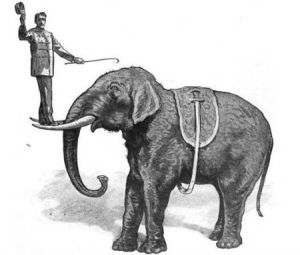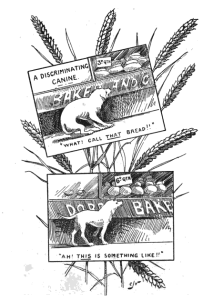At eighty feet high and close to two feet thick, the black birch dwarfs its fellow trees. It’s solitary, preferring to make its home on craggy, mountain precipices, where its branches can reach over deep chasms and it roots can burrow between rocks into moist, rich soil. But it’s also handsome, having large oval leaves laced with fine veins that turn yellow in autumn and bark that in youth is a seamless near-black and in maturity becomes cracked and furrowed.
Continue readingCategory: vegetarian
Bread to Make a Hungarian Rhapsodic
Today’s weight-obsessed gastronomes, ever mindful of carbohydrates and calories, generally demur when dinner rolls are passed their way. Yet history reveals that such reticence is unusual. Centuries ago, the attitude prevailed that a meal without bread was no meal at all. Even kings made a show of their baked goods. When in 1663 Transylvanian Prince Mihály Apafi invited the entire Ottoman army to dine with him after a battle, he rolled out, among other tidbits, two-score enormous boules. So impressed with this display was the Turkish world traveler, Evliya Celebi, that he recorded it in his journal. “The meadows were covered with Hungarian carpets,” he writes, “onto which forty giant loaves were placed.” The king’s means of conveying the loaves to the hungry soldiers Calebi found equally impressive. “Each one had to be drawn on an oxcart,” he continues, for “each … was twenty paces long, and five paces wide, and as high as a full-grown man.”
Continue readingOf Balloons, Bugles and Apple Butter
Washington Harrison Donaldson performed his greatest feats of derring-do while borne aloft by a large gas balloon. Or so discovered a crowd of curious onlookers one August morning in 1871 when the gymnast and self-styled aeronaut dressed in tights decided to take his big-top routine to the heavens. From the small town of Reading, Pennsylvania he set off at a quarter to ten in the morning. As dozens watched, his balloon, heavy with ballast, rose uncertainly at first, climbing thirty or so feet before its basket lurched against a house roof. Rope, grappling iron, coat, boots, hat and provisions Donaldson jettisoned, and the balloon resumed its ascent. A quarter of a mile above ground, he “skinned the cat” upon the hoop just above the wicker basket to the entertainment of any eyes cast skyward. On that maiden flight he drifted “some eighteen miles,” as M.L. Amick recounts in his 1875 History of Donaldson’s Balloon Ascensions, passing through clouds and over farms before coming to rest in a plow field.
Continue reading


